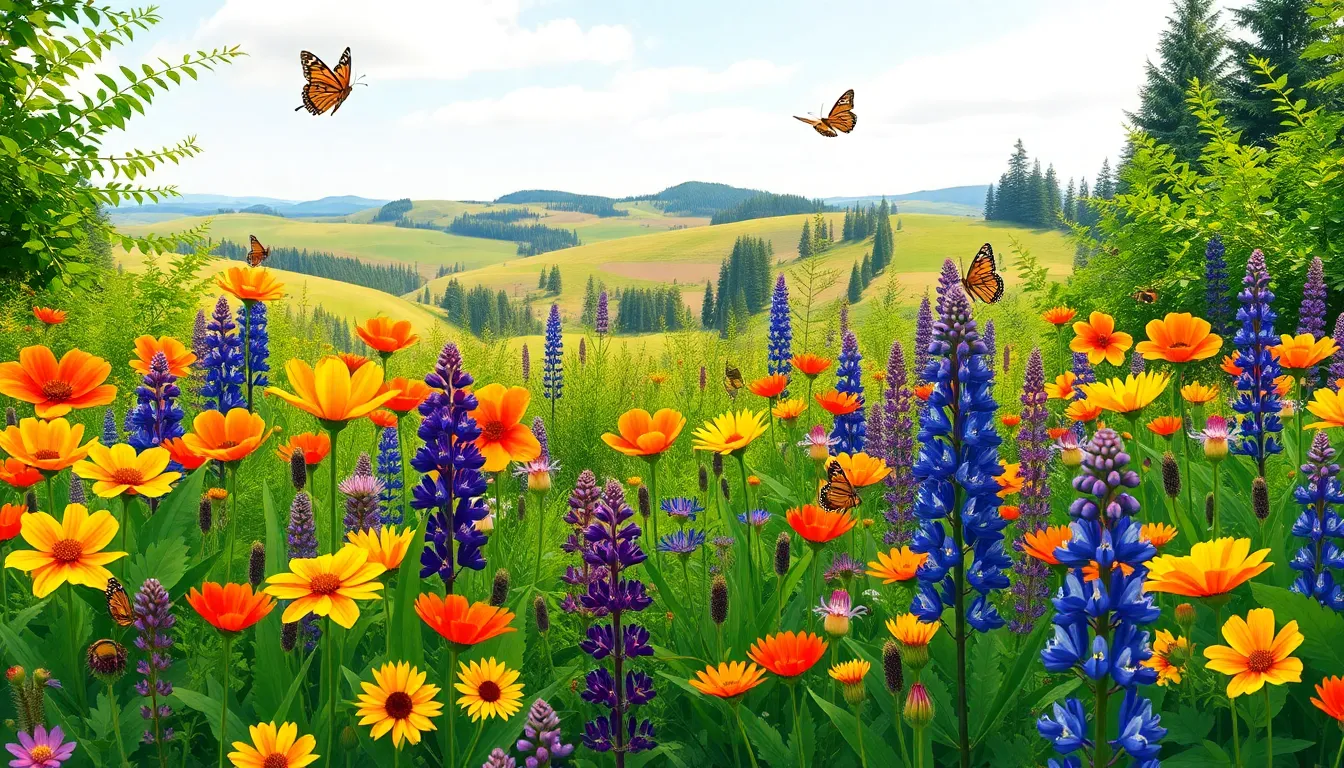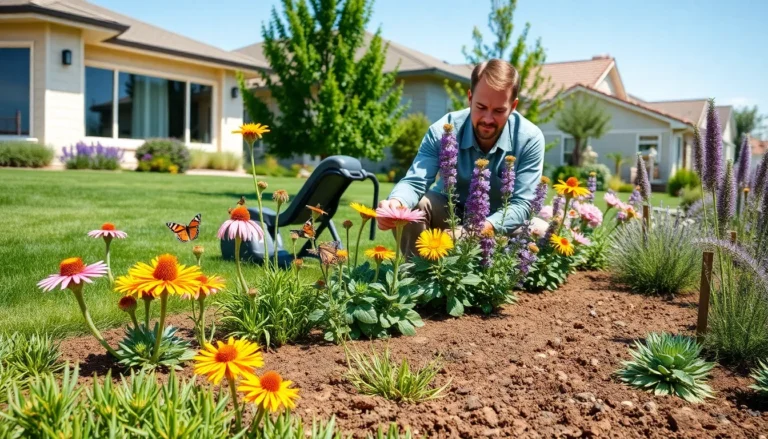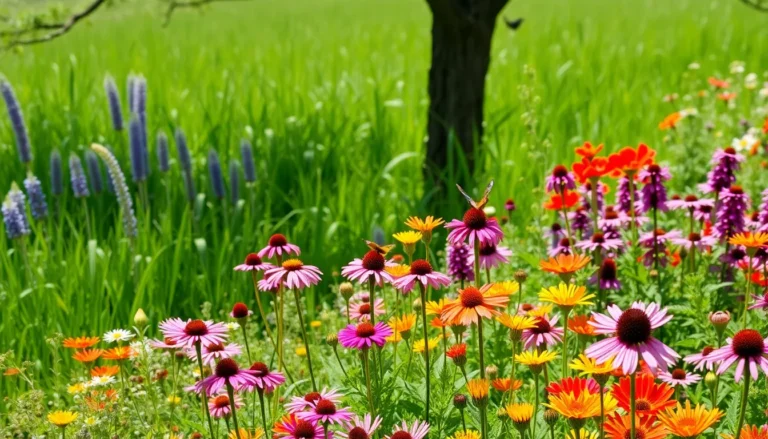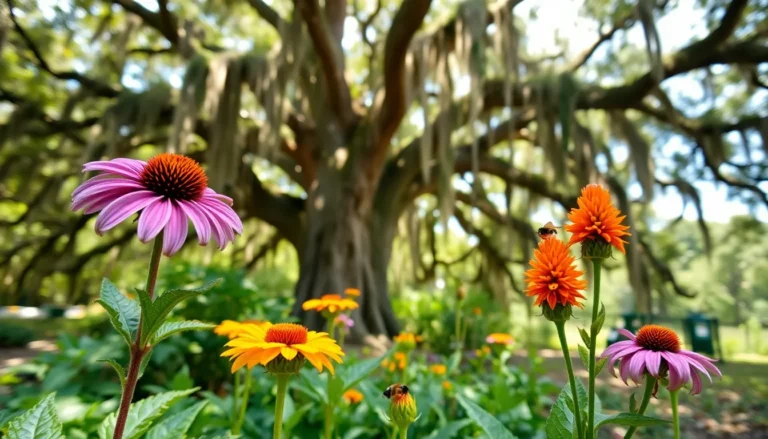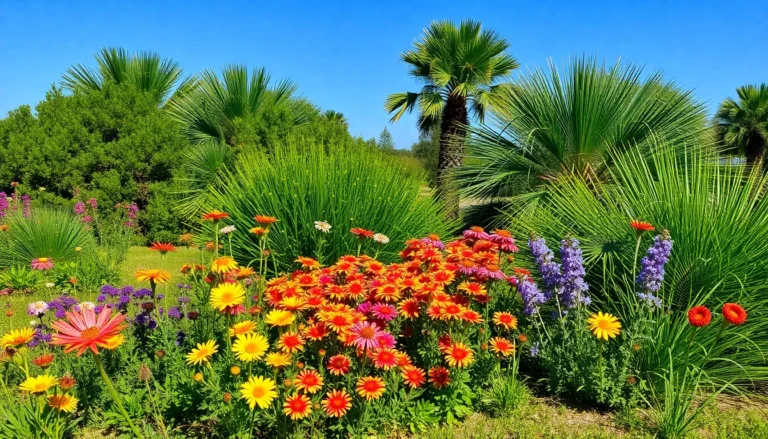Oregon’s native plants are like the unsung heroes of the landscape—quietly thriving while their flashy, exotic cousins steal the spotlight. These local flora not only add beauty to gardens but also support ecosystems and attract wildlife. Imagine a garden that’s not just pretty but also a buzzing hub of bees and butterflies. Who wouldn’t want to be the talk of the neighborhood?
Choosing native plants is like inviting the cool kids to your garden party. They’re low-maintenance, drought-tolerant, and perfectly adapted to Oregon’s climate. Plus, they come with a side of environmental benefits. So why not ditch the high-maintenance divas and embrace the charm of Oregon’s own green wonders? Your garden—and the planet—will thank you.
Oregon Native Plants
Oregon native plants play a critical role in sustaining local ecosystems. These plants provide essential habitats and food sources for various wildlife, including birds, insects, and small mammals. Many native species exhibit drought resistance, making them particularly suitable for Oregon’s varied climate conditions.
Types of Oregon native plants vary widely, ranging from wildflowers to trees and shrubs. For instance, the Oregon grape, a popular shrub, produces bright yellow flowers that attract pollinators. Additionally, the California poppy, known for its vibrant orange hue, thrives in many regions across the state.
Native plants typically require less water and maintenance compared to non-native varieties. Their adaptability to local soil and climate conditions reduces the need for chemical fertilizers and pesticides, promoting healthier garden ecosystems. Choosing these plants supports biodiversity while enhancing the aesthetic appeal of gardens.
Oregon’s landscapes feature an array of environments, such as coastal regions, forests, and high deserts. Each environment hosts unique native species adapted to specific conditions. In coastal areas, species like the salt marsh sandwort thrive, benefiting from ocean breezes and saltwater exposure. In more arid regions, plants like the sagebrush dominate, showcasing the state’s ecological diversity.
Community support for native plants is vital. Numerous organizations promote the use of these species in landscaping and restoration projects. Engaging with local nurseries that specialize in native plants can lead to successful gardening outcomes, encouraging habitat preservation and biodiversity.
Fostering a connection to native plants helps residents appreciate their surroundings and contributes to environmental health. Local gardening clubs often offer workshops and resources to educate the community on the benefits of incorporating native flora into landscapes.
Importance of Native Plants

Oregon’s native plants play a vital role in maintaining local ecosystems. These plants not only enhance the environment but also create a rich tapestry of life.
Ecological Benefits
Native plants offer numerous ecological advantages. They provide habitats and food sources for local wildlife like birds and pollinators. Supporting biodiversity, they nurture the delicate balance necessary in ecosystems. Lower water requirements make them ideal for Oregon’s varied climate, reducing the need for irrigation. Gardeners favor these species due to their resilience against local pests and diseases, ultimately fostering healthy plant communities. Additionally, native plants contribute to soil health by preventing erosion and promoting nutrient cycling.
Cultural Significance
Culturally, native plants hold significant value for Oregon’s indigenous communities. Many species have been utilized for centuries in traditional practices, including medicine and crafting. Connection to these plants fosters an appreciation for ancestral knowledge and heritage. Local cultures celebrate these flora through festivals and educational programs, highlighting their importance within Oregon’s identity. Engaging with native plants allows residents to connect deeply with their environment, enriching their cultural experience. Through storytelling and cultural preservation efforts, the significance of native plants continues to thrive in Oregon.
Common Oregon Native Plants
Oregon features a diverse range of native plants, including trees, shrubs, and wildflowers that thrive across the state’s varying climates.
Trees
Native trees in Oregon contribute significantly to local ecosystems. Douglas fir, a prominent species, provides habitat and food for various wildlife. Western red cedar thrives in wet areas, offering essential materials for indigenous cultures. Ponderosa pine, found in eastern Oregon, showcases drought resistance and supports diverse wildlife. Other noteworthy native varieties include black cottonwood and bigleaf maple, both vital for maintaining healthy forests. These trees not only enhance the beauty of landscapes but also serve crucial environmental functions.
Shrubs
Oregon boasts a rich variety of native shrubs that enrich local flora. Oregon grape is a well-known example, attracting pollinators while producing edible berries. Another common shrub, red-flowering current, offers vibrant blooms and supports wildlife. Snowberry is drought-resistant and provides food and shelter for birds and small mammals. Additionally, manzanita is appreciated for its striking appearance and unique bark. These shrubs thrive in diverse habitats while contributing to the overall health of ecosystems.
Wildflowers
Wildflowers in Oregon create stunning displays and support pollinator populations. California poppy, with its bright orange blooms, flourishes in open spaces and attracts bees and butterflies. Lupine adds splashes of purple and provides important nectar sources. Furthermore, the delicate pin cushion flower draws attention for its unique shape and provides pollen for various insects. Oregon’s native wildflowers not only beautify landscapes but also play essential roles in fostering biodiversity and supporting local wildlife.
How to Grow Oregon Native Plants
Growing Oregon native plants requires thoughtful selection and proper care. Understanding their specific needs leads to thriving gardens.
Selecting the Right Plants
Prioritize choosing native species that suit local climate and soil conditions. Popular options include Oregon grape, California poppy, and lupine. Consider flowering times and growth habits to create a vibrant landscape. Selecting plants that support local pollinators enhances garden biodiversity. Local nurseries often provide knowledgeable staff who can guide plant selection. They offer a variety of native plants suited for different regions within Oregon. Engaging with local gardening clubs expands knowledge and resources for choosing the right plants.
Planting and Care Tips
Prepare the soil by amending it with organic matter to improve drainage and nutrient availability. Space plants appropriately to ensure adequate sunlight and airflow, promoting healthy growth. Watering should focus on establishing roots, particularly during dry periods. Mulching around plants conserves moisture and suppresses weeds. Monitor for pests and diseases, addressing them as needed without chemicals whenever possible. Emphasizing sustainable practices contributes to overall ecosystem health. Oregon native plants typically require minimal fertilization once established, reinforcing their low-maintenance appeal.
Conclusion
Embracing Oregon’s native plants offers numerous benefits for gardeners and the environment alike. These plants not only enhance the beauty of landscapes but also play a crucial role in supporting local wildlife and promoting biodiversity. By choosing native species, individuals contribute to healthier ecosystems that require less maintenance and water, making gardening more sustainable.
Engaging with local communities and nurseries fosters a deeper appreciation for these plants and their cultural significance. As awareness grows, the movement towards incorporating native flora into gardens can lead to a stronger connection with Oregon’s natural heritage. Ultimately, the choice to cultivate native plants is a step towards preserving the state’s ecological balance while enjoying the vibrant beauty they bring to outdoor spaces.

